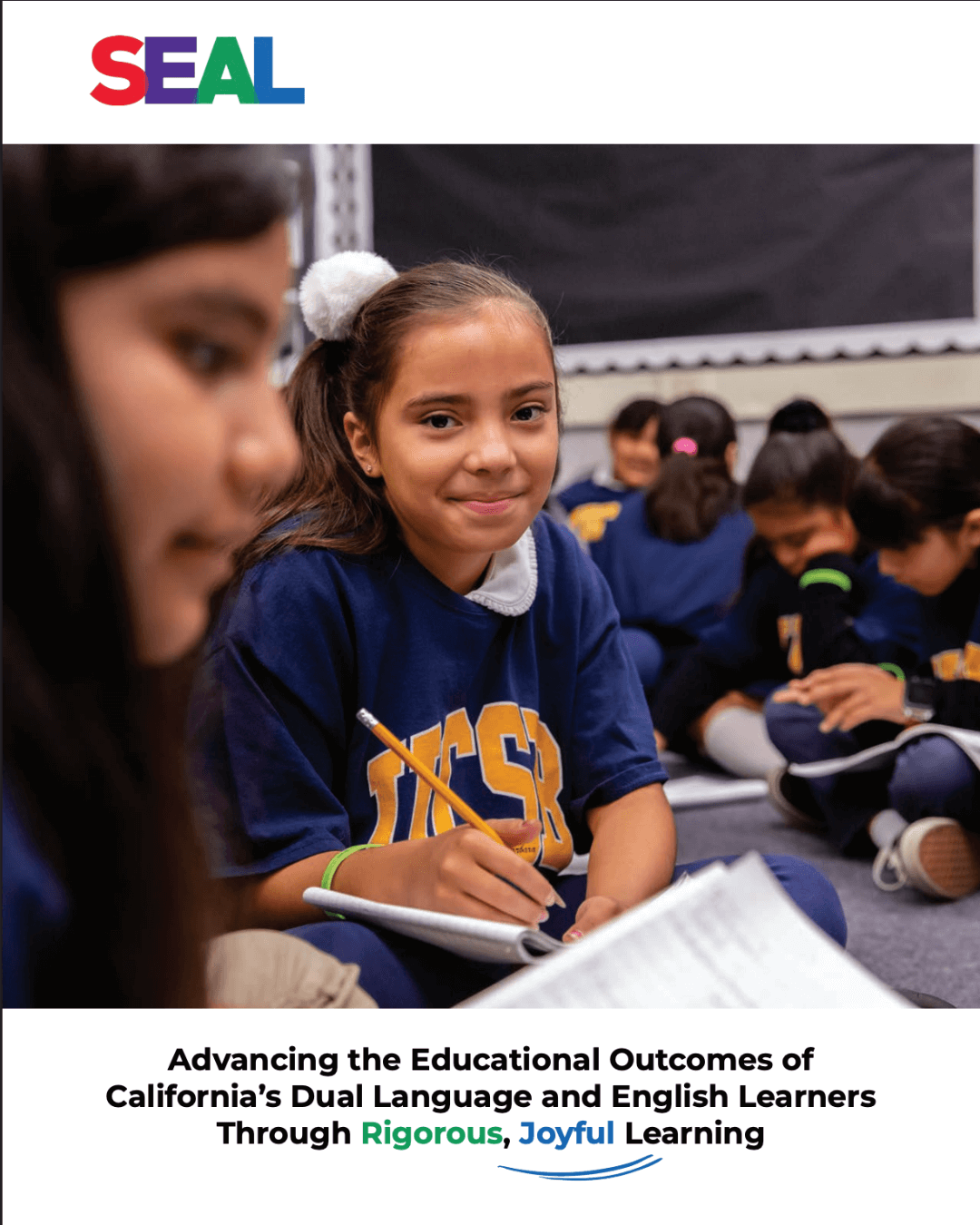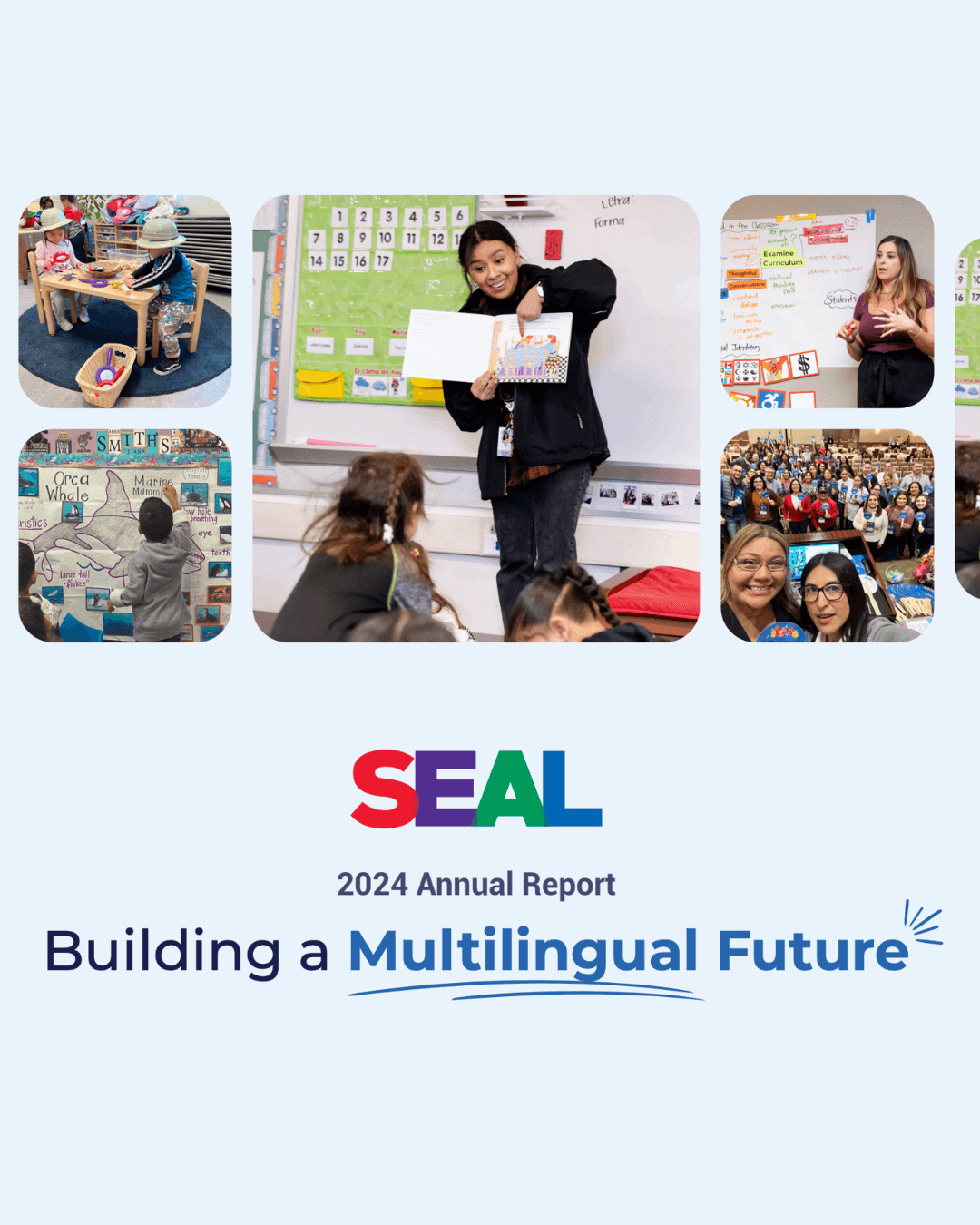Research
Explore our published insights designed to help advance the field’s understanding of what works for English Learners, Dual Language Learners, and Multilingual Learners.


SEAL Overview Impact Report
SEAL’s Overview Impact Report showcases our mission, reach, and lasting influence on multilingual learners. Explore our story, see our statewide impact, learn how our pedagogy centers English Learners, and discover key lessons from our work with schools and communities.
%20copy.png)
Key Lessons from Over a Decade of Impact
When schools center language, culture, and community, English Learners don’t just succeed—they thrive. We’ve identified eight key lessons about what it truly takes to create schools where multilingual learners flourish. Download to read more about these key lessons.

SEAL's 11 High-Leverage Pedagogical Practices
Our 11 High-Leverage Pedagogical Practices equip educators to create rigorous, joyful, and language-rich classrooms where every student succeeds. By integrating students’ linguistic and cultural assets, SEAL fosters a learning environment that values home languages and empowers diverse learners to reach their full potential.

SEAL 2024 Annual Report
SEAL’s 2024 Annual Report highlights a year of growth, impact, and advocacy for multilingual learners. Explore stories, data, and milestones that showcase how we’re advancing educational equity and building a brighter future for all students.
Latest Presentations

.png)
CABE 2025 TheDictado - A Powerful Strategy for Dual Language Classrooms
Discover TheDictado: An essential tool and explicit approach for teaching writing skills and fostering cross-linguistic connections.
.png)
CABE 2025 Maximizing ELD Impact: Practical Tools and Strategies for Leaders
Tools and strategies needed to enhance classroom practices and student outcomes, ensuring a cohesive and supportive approach to designated ELD

CABE 2025 Supporting Dual Language Learners in Preschool & Kindergarten
This CABE 2025 session explored current research on meeting the needs of young DLLs, particularly in the area of oral language development in both their home language and English.
.png)
CABE 2025 El poder de contar historias: Herramientas para promover el bilingüismo en casa
Este taller le proveyó herramientas y estrategias sobre cómo promover el bilingüismo en casa usando las mejores prácticas basadas en la investigación del modelo SEAL.
.png)
CABE 2025 Cross-Linguistic Connections in Multilingual Programs
This workshop explored how to develop students’ metalinguistic awareness through cross-linguistic strategies and practices.
.png)
CABE 2025 Designated and Integrated ELD: Using Language Functions as a Bridge
We explored SEAL’s model of language functions, graphic organizers, differentiated sentence frames, and transfer lessons while developing a deep understanding of how to bridge what their students are learning in Spanish into content-based Designated ELD.
%201.svg)